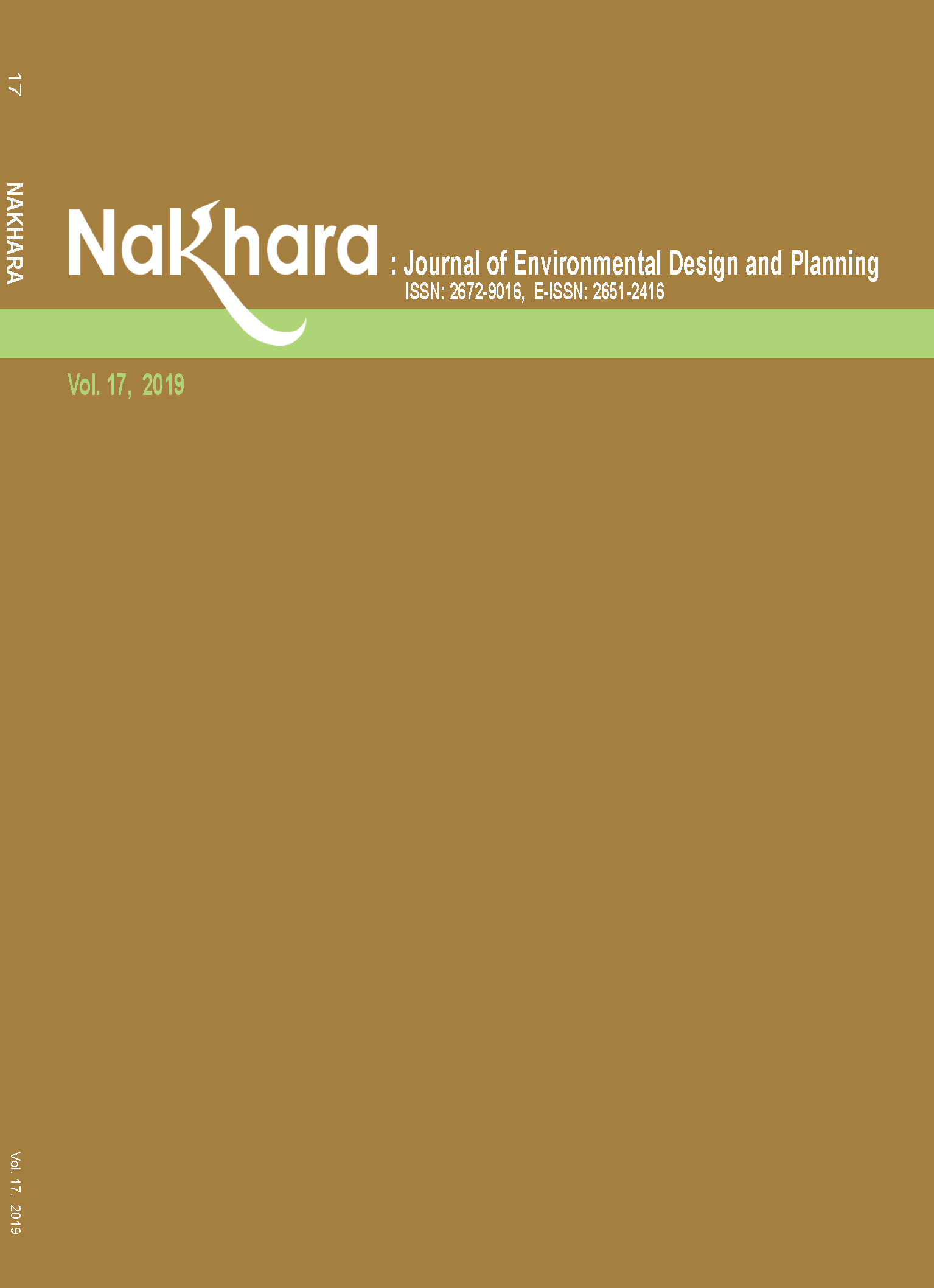The Commodification of Public Spaces on Khao San Road
Main Article Content
Abstract
This study focuses on the mechanisms and institutions for the governance of public spaces on Khao San Road, Bangkok. Khao San is a small road famous for tourism. It is located near major attractions, and is full of budget accommodations and street vendors. This street is known among the locals and foreign tourists as one of Bangkok’s most vibrant and lively.
Furthermore, Khao San offers immense opportunity for vendors, as it is crowded with tourists all day. This factor is of utmost importance to the success of businesses. Therefore, competitions for prime vending spots on the road have been going on for years. Under these circumstances, public spaces are transformed into private goods that can be traded, transferred and deprived in reality. With the qualitative method of grounded theory, this paper reveals the process of Khao San Road’s commodification as well as the mechanisms and institutions involved in the process. Qualitative data collected using three methods: non-participant observations, in-depth interviews, and document studies were triangulated and analysed. The findings suggest that both external and internal mechanisms have stimulated the commodification of public spaces on Khao San Road over the past decades. The external mechanisms are tourism and multinational capitalist economy. The internal mechanism relates to community norms on the de facto individual rights over public spaces. These mechanisms have developed unofficial rules to work at an operational level with official rules supervised by officials. A critical outcome of these mechanisms and rules is the determination of the right to access and use public spaces by various groups of stakeholders.
In conclusion, the paper discusses the relationship between the commodification of public spaces and the inequality problem. Public spaces as private goods are not different from other private possessions that can be excluded through price, authority, and policy mechanisms. Collaboration between mechanisms has resulted in only a small number of people having the opportunity to indeed access and utilise the resources on the street. People whose opportunity is denied need to bring themselves into the patronage system to ensure the survival of their businesses.
Article Details

This work is licensed under a Creative Commons Attribution-NonCommercial-NoDerivatives 4.0 International License.
References
Caelli, K., et al. (2003). Clear as mud’: Toward greater clarity in generic qualitative research. International Journal of Qualitative Methods, 2, 2, 1-13.
Charmaz, K. (2001). Grounded theory: Methodology and theory construction. In N. Smelser & P. Baltes (Eds.) International Encyclopedia of the Social & Behavioral Sciences: 6396-6399.
Cole, D. (2015). Formal institutions and the IAD framework: Bringing the law back in. Retrieved from: https://ostromworkshop.indiana.edu/pdf/seriespapers/2015s_c/Cole_paper.pdf
Crawford, M. (1999). Blurring the boundaries: Public space and private life. New York: Monacelli Press.
Creswell, J. W. (2009). Research design: Qualitative, quantitative, and mixed methods approaches. (3rd ed.). Thousand Oaks, CA: Sage Publications.
Dunne, C. (2011). The place of the literature review in grounded theory research, International Journal of Social Research Methodology, 14 (2),111-124, DOI: 10.1080/13645579.2010.494930.
Gehl, J. (2001). Life between buildings: Using public spaces. Copenhagen: The Danish Architectural Press.
Graham, S. (2010). Cities under siege: The new military urbanism. London: Verso.
Habermas, J. (1989). The structural transformation of the public sphere: an inquiry into a category of bourgeois society. Cambridge: MIT Press.
Hardin, G. (1968). The tragedy of the commons. Science, 162, 1243-1248.
Hess, C. (2008). Mapping the New Commons:Governing shared resources: connecting local experience to global challenges. the 12th Biennial Conference of the International Association for the Study of the Commons. Cheltenham, UK.
Hess, C. & Ostrom, E. (2005). A Framework for analyzing the knowledge commons: A chapter from understanding knowledge as a commons: from theory to practice. Library and Librarians’ Publication. Paper 21. Retrived from: https://surface.syr.edu/sul/21
Mitchel, D. (2003). The right to the city. New York: The Guilford Press.
Nigussiea, Z., et al. (2018). Applying Ostrom’s institutional analysis and development framework to soil and water conservation activities in north-western Ethiopia. Land Use Policy, 71 (February), 1-10.https://doi.org/10.1016/j. landusepol.2017.11.039
Nemeth, J. (2012). Controlling the commons: How public is public space? Urban Affairs Review 48, 6, 811-835.
Ostrom, E. (2005). Understanding institutional diversity. Princeton, NJ.: Princeton University Press.
Ostrom, E. (2011). Background on the institutional analysis and development framework. The Policy Studies Journal 39, 1, 20.
Parkinson, J. R. (2012). Democracy and public space. Oxford: Oxford University Press.
Polko, A. (2012). Urban public spaces: form economics to management. Studia Regionalia KPZK PAN 34.
Samuelson, P. A. (1954). The pure theory of public expenditure. Review of economics and statistics, 36, 4, 387-389.
Sommer, R. (1989). Farmer’s markets as community events. In I. A. E. H. Zube (Ed.), Public Places and Spaces (pp.57-82). New York: Plenum Press:
Syafini,M. M. et al. (2016). The multiple approaches of grounded theory: justification for straussian version. International Journal of Science and Technology 2, 186-196.
Williamson, O. E. (1985). The economic institutions of capitalism. New York: Free Press.
Whyte, W. H. (1976). The social life of small urban space. Washington D.C.: Conservation Foundation.

